Becoming a true Moroccan chef requires more than just mastering recipes. It’s about embracing the country’s rich culinary heritage and immersing oneself in the vibrant flavors that define the nation’s cuisine. From sourcing the finest local ingredients to meticulously executing time-honored cooking techniques, the path to culinary authenticity is paved with dedication and a deep appreciation for Moroccan traditions. By diving into this captivating gastronomic journey, aspiring chefs can uncover the secrets that elevate Moroccan dishes to a level of unparalleled complexity and harmony.
Key Points
-
Enjoy the vibrant local markets to source the freshest, highest-quality ingredients that define Moroccan culinary traditions.
-
Master the intricate techniques of Moroccan cuisine, such as the delicate art of couscous steaming and the meticulous layering of flavors in a tagine.
-
Develop a deep understanding of Moroccan breads, from the pillowy, pull-apart texture of Msemmen to the rustic, wood-fired Khobz.
-
Craft flavorful, authentic Moroccan tajines by selecting the right cuts of meat, building the perfect base, and slow-cooking with precision.
-
Personalize the cooking experience by accommodating dietary needs while maintaining the rich, harmonious flavors of Moroccan cuisine.
Selecting Authentic Ingredients
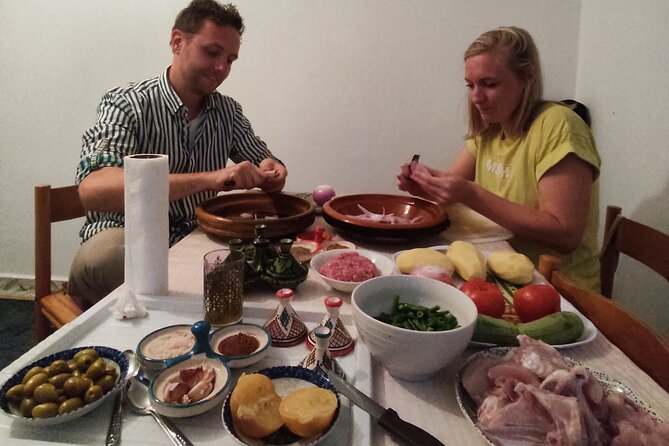
Selecting the right ingredients is crucial for creating authentic Moroccan dishes. The chef takes participants on a guided tour of the local market, explaining the unique spices, produce, and meats that are essential to Moroccan cuisine.
From fragrant cumin and paprika to fresh cilantro and tomatoes, learners discover the vibrant flavors that define the country’s culinary traditions. The chef emphasizes the importance of using high-quality, locally-sourced ingredients, as they provide the foundation for the rich, complex tastes of Moroccan food.
You can also read our reviews of more tours and experiences in Essaouira.
Mastering Traditional Techniques
Mastery of traditional cooking methods lies at the heart of Moroccan culinary excellence, as the chef expertly guides participants through time-honored techniques that unlock the full potential of the ingredients.
From the delicate art of couscous steaming to the meticulous layering of flavors in a tagine, every step is carried out with precision and care. Attendees learn the intricate dance of spice blending, the gentle simmering required for tender meats, and the proper way to caramelize onions to perfection.
Preparing Moroccan Breads

Alongside the intricate techniques of tagine and couscous, the Moroccan chef also guides participants through the art of baking traditional Moroccan breads, unlocking the full depth of flavors in the meal.
From the pillowy, pull-apart texture of Msemmen to the rustic, wood-fired Khobz, each bread holds a distinct place in Moroccan cuisine. The chef demonstrates the delicate process of kneading, shaping, and cooking these staples, allowing students to gain an appreciation for the care and skill required.
Whether it’s the buttery layers of Rghaif or the nutty aroma of Khobz Raghif, mastering Moroccan breads is a fundamental step in becoming a true Moroccan chef.
Crafting Flavorful Tajines
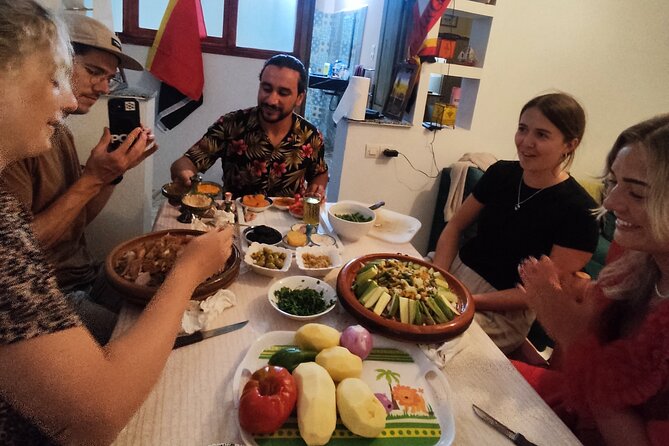
How does the Moroccan chef guide participants in crafting the aromatic, slow-cooked tajines that are the hallmark of Moroccan cuisine?
By meticulously selecting the freshest meats, vegetables, and spices, the chef demonstrates the intricate layering of flavors that transforms humble ingredients into a rich, harmonious dish.
First, the chef explains the importance of using the right cuts of meat and how to brown them to seal in juices.
Next, participants learn to create the perfect base of onions, garlic, and spices.
Finally, the chef shows how to layer the remaining ingredients before slow-cooking the tajine to perfection.
Through this hands-on guidance, participants gain an appreciation for the care and craft required to make an authentic Moroccan tajine.
Shopping at Local Markets
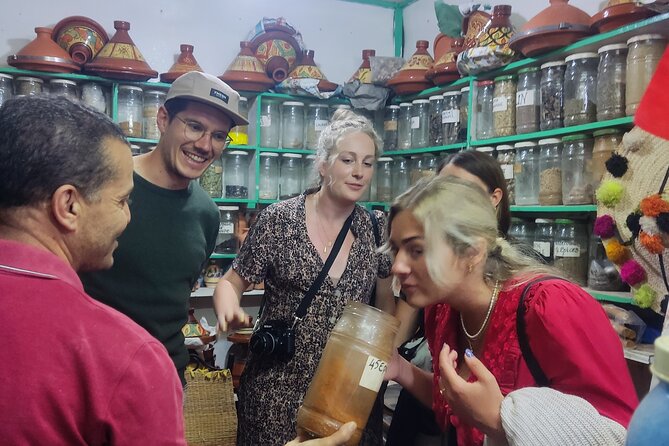
After guiding participants through the intricate process of crafting aromatic tajines, the Moroccan chef now leads them to the local markets to source the freshest ingredients.
Wandering through the vibrant stalls, the chef points out the season’s best produce, explaining how to select the ripest tomatoes, crispest greens, and most fragrant herbs that will elevate the flavors of their meal.
The chef emphasizes the importance of building relationships with trusted vendors, who can provide insider tips on the day’s highest quality offerings.
Skillfully navigating the bustling marketplace, the chef demonstrates how to haggle for the best prices while respecting local customs.
With the perfect ingredients secured, the group returns to the kitchen, ready to create an authentic Moroccan feast.
Ensuring Dietary Accommodations
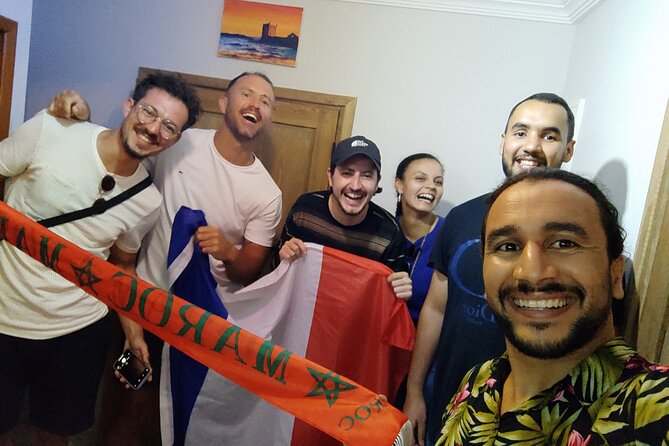
The Moroccan chef gladly accommodates any dietary restrictions or preferences, ensuring a truly personalized cooking experience for each participant.
Whether you’re vegetarian, vegan, gluten-free, or have any other dietary needs, the chef will work closely with you to curate a menu that fits your requirements.
They’ll source the freshest, high-quality ingredients and prepare an authentic Moroccan meal tailored to your needs.
This hands-on cooking class allows you to learn traditional techniques while enjoying a meal that caters to your dietary preferences.
With the chef’s expertise and attention to detail, you’ll walk away with a memorable and flavorful Moroccan culinary experience.
Personalizing the Cooking Experience
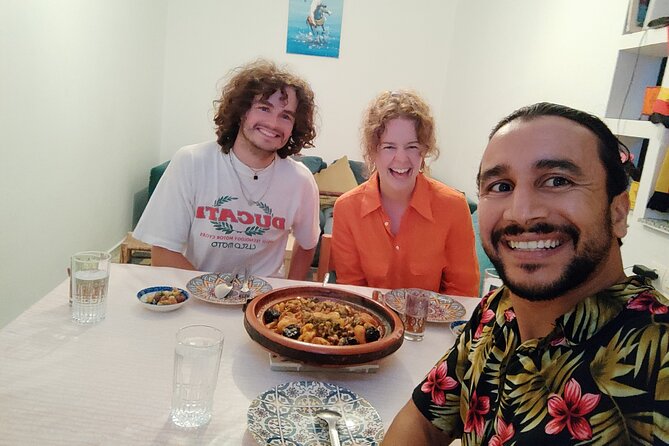
Beyond just accommodating dietary needs, the Moroccan chef personalizes the cooking experience in myriad ways to ensure each participant leaves with a truly memorable culinary adventure.
From the intimate, small-group setting to the hands-on involvement in selecting fresh ingredients, the experience is tailored to each individual.
Participants can:
- Explore the vibrant local market, choosing their own spices and produce
- Collaborate with the chef to customize the menu based on personal preferences
- Learn traditional cooking techniques passed down through generations
- Engage in lively discussions about Moroccan culture and culinary history
- Savor the authentic flavors of their homemade meal in a cozy, welcoming atmosphere
This personalized approach creates an immersive, authentic Moroccan cooking experience unlike any other.
Returning to the Meeting Point
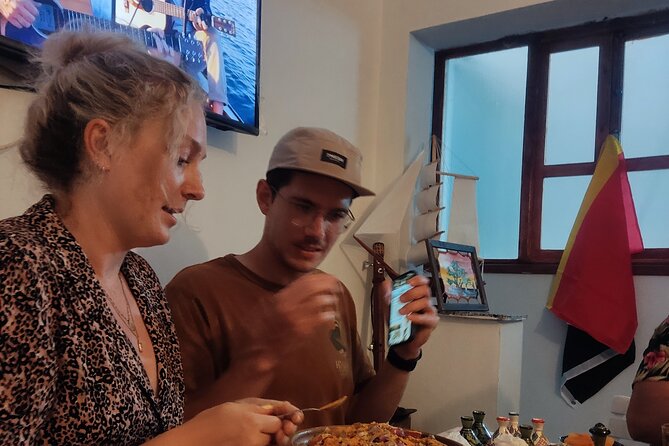
At the conclusion of the cooking class, participants return to the original meeting point in front of Bab Doukkala in Essaouira, Morocco.
There, they’ll bid farewell to the chef and reflect on the delicious Moroccan meal they just prepared together.
The experience has given them a deeper appreciation for traditional Moroccan cuisine and the art of cooking.
As they depart, they may feel inspired to recreate the dishes at home or seek out other authentic Moroccan culinary adventures in the future.
The intimate, personalized nature of the class has left a lasting impression, making it a truly memorable part of their Moroccan journey.
Frequently Asked Questions
How Should I Dress for the Cooking Class?
Dress comfortably and casually for the cooking class. Wear clothes that can get dirty, as you’ll be hands-on in the kitchen. Closed-toe shoes are recommended for safety. The chef will provide any necessary cooking attire, like aprons, to ensure a great experience.
Can I Take Photos During the Cooking Process?
Yes, participants are welcome to take photos during the cooking process. The private, personalized cooking class encourages guests to capture their experience and the traditional Moroccan dishes they prepare under the guidance of the local chef.
Is There an Option to Take the Food Home?
The cooking class does not offer the option to take the prepared food home. The experience is focused on the hands-on cooking process and enjoying the prepared meal on-site with the instructor and group.
How Many People Typically Attend the Cooking Class?
The cooking class is a private, intimate experience, with only your group participating. The maximum group size is typically 4-6 people, allowing for a personalized and hands-on learning experience from the Moroccan chef.
Is There a Minimum or Maximum Group Size Requirement?
The cooking class has a private, personalized experience. There’s no minimum or maximum group size, as it’s tailored to the individual booking. The class caters to the specific needs and preferences of each group.
Recap
To become a true Moroccan chef, one must embrace the country’s rich culinary traditions. This involves sourcing the finest local ingredients, mastering time-honored cooking methods, and crafting authentic Moroccan breads and flavorful tajines.
Engaging with local markets, accommodating diverse dietary needs, and personalizing the cooking experience are also crucial.
By upholding these principles, one can truly capture the essence of Moroccan cuisine.
More Tour Reviews in Essaouira
Not for you? Here's more things to do in Essaouira we have recnetly reviewed
- 2 Best Dining Experiences In Essaouira
- 2 Best Dinner Tours In Essaouira
- 2 Best Shopping Tours In Essaouira
- 6 Best Full-Day Tours In Essaouira
- 3 Best Lunch Experiences In Essaouira
- 2 Best Food Tours In Essaouira
- Visit the Oasis & Tea at the Basket Maker.
- Private Transfer Essaouira-Agadir
- Full Day Tour to Essaouira From Marrakech
- 2h Surf Lessons in Essaouira With Pick up
- Essaouira: Private Transfer From or to Essaouira Airport
- Essaouira Kitesurf Lesson
